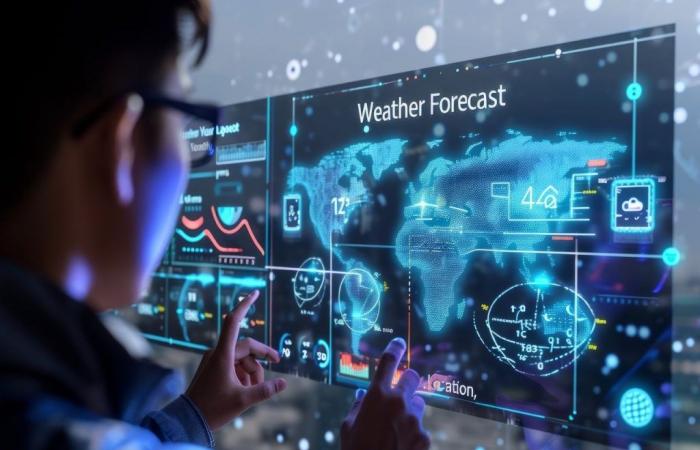Weather forecasts are not limited to telling us whether to bring an umbrella or not. They have a profound impact on many aspects of our daily lives and play a vital role in the realization of Sustainable Development Goals (SDGs).
Climate resilience
Climate change is leading to an increase in the frequency and intensity of extreme weather events such as hurricanes, droughts and floods. Weather forecasts help to better anticipate these phenomena and take preventive measures.
For example, early warnings can be issued to evacuate at-risk populations and secure critical infrastructure. This not only helps save lives but also reduces economic losses. By building community resilience to natural disasters, weather forecasts directly supportSDG 11: “Sustainable cities and communities” and SDG 13: “Climate action”.
Moreover, Food security depends largely on climatic conditions. Weather forecasts help farmers plan crop cycles and to optimize the use of water and fertilizers. This improves agricultural production and strengthens the resilience of food systems to climate change, thereby contributing to reduce hunger and ensure adequate food for all (SDG 2).
Sustainable resource management
THE Weather forecasts play a crucial role in the management of water resources, which are essential for agriculture, industry and human consumption.
They allow toanticipate periods of drought to plan more efficient irrigation strategies and save water, while predicting floods to better manage dams and reservoirs to avoid overflows.
These actions support SDG 6: “Clean water and sanitation” by ensuring sustainable and efficient management of water resources.
Urban planning
Cities are particularly vulnerable to extreme weather conditions. Weather forecast help urban planning by providing data to design climate-resilient infrastructure.
This includes stormwater management, building weather-resistant buildings and planning green spaces to reduce urban heat islands, thus contributing to making cities and human settlements open to all, safe, resilient and sustainable (SDG 11).
Improved public health
Weather conditions strongly influence the spread of diseases, notably air pollution exacerbated by specific conditions, thereby increasing risks to public health.
Prolonged periods of heat can increase cases of dehydrationwhile excessive rainfall promotes the proliferation of mosquitoes that carry diseases such as malaria and dengue fever.
Weather forecasts make it possible to identify periods of increased pollution, to prepare health systems by anticipating all trends, thus supporting theSDG 3 which aims to empower people to live healthy lives and promote well-being for all at all ages.
Optimization of renewable energies
Renewable energy, such as solar and wind, is highly dependent on weather conditions. Accurate forecasts help optimize their production and use, helping to reduce greenhouse gas emissions (GHG) and the transition to more sustainable energy sources.
This optimization supports SDG 7 by ensuring access for all to reliable, sustainable and modern energy services at an affordable cost, while encouraging theODD 13 which advocates the urgent taking of measures to combat climate change and its repercussions.
Strengthening international cooperation
The challenges posed by climate change and natural disasters transcend national borders, requiring international cooperation for data and technology sharing.
Initiatives such as the multi-hazard early warning systems (Earlywarning4all) under the leadership of the World Meteorological Organization illustrate how international collaboration can improve collective resilience and sustainable development, thus supporting SDG 17: “Partnerships for the Goals”.
Amplify Reach
Weather forecasts play a transversal role in achieving the SDGs by providing accurate and timely information for informed decisions.
To maximize their impact, it is essential to build capacity and encourage research in the field of weather and climate, to guarantee access to this information for all, particularly in the most vulnerable regions.






